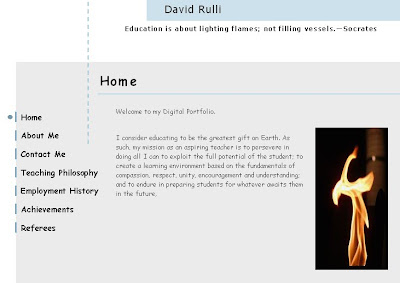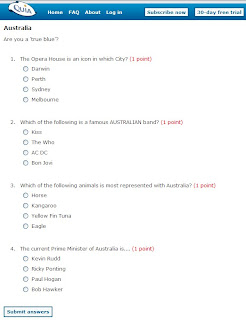http://www.coolmelbourne.org/resource-centre/
The Cool Melbourne website gives a local perspective to environmental issues and promotes a great range of green stories taking place in the community. The educational videos offered are perfect for children and clearly portray environmental challenges we face as a global community.
Native Planet Website
http://www.nativeplanet.org/index.shtm
This website represents the mission of Jean-Philippe Soule, an activist determined to educate people about native cultures and assist traditional communities all over the world. The photo gallery allows you to specify the culture and browse through images that reflect different customs and rituals...a useful classroom resource.

Australian Human Rights Commission Website
http://www.hreoc.gov.au/education/index.html
The education program offered on this website aims at explaining what human rights are, where they come from and how they are protected in Australian and International law. Teachers resources available include activities on child's rights, disability rights, human rights, indigenous rights, multiculturalism, race relations and sexual harassment.
Making Cents Website
http://www.makingcents.com.au/
Making Cents provides a series of education units for primary schools, particularly useful for Social Sciences and Maths curriculum, focused on developing monetary skills and an awareness of various financial issues. Resources are grouped by state and broken down into lower, middle and upper primary levels. The complete teaching unit booklet with lesson plan ideas can be downloaded from the site.
Catchment Detox Game
http://www.catchmentdetox.net.au/
This online game serves as a great resource for an environmental unit in the classroom. Basically, it puts you in charge of a whole catchment and you have a 100 turns to score points through your management of environmental issues. For example, you have the choice to plant crops, log forests and provide food and wealth to the population. The game encourages children to devise environmental strategies. This serves as the perfect means of establishing an awareness of the balance required for a healthy planet.The UN Food Force Game
http://www.food-force.com/
In this game, children interactively explore the process of delivering food aid to crisis areas. The website makes a point of relating the gaming environment to reality and provides information for teachers that help define what hunger is, why people are hungry and how to end hunger.
BBC Online Educational Games
http://www.bbc.co.uk/schools/games/
This website offers a wide range of online games categorised for primary school students as follows: art, citizenship, geography, history, languages, literacy, music, numeracy, physical education, health and science.
Angries Out Website
http://www.angriesout.com/
As an aspiring teacher, I must say that it's easy to overlook the impact behavioural and emotional issues have in the classroom. This website provides anger management techniques for children. There are many resources including interactive exercises that can be downloaded onto the computer free of charge. Below is an extract taken from the website. It's great material for a classroom display.
RULES FOR GETTING YOUR MADS OUT
Check your tummy, jaws and your fists. See if the mads are coming.
Breathe! Blow your mad out.
Get your control. Feel good about getting your control.
Stop and think; make a good choice.
People are not to be hurt with your hands, feet or voice.
You Can't hurt people just because you are mad.
Remember to use your firm words, not your fists.
Use a strong voice and talk your mads out. Say "I feel mad when you ____."
Sometimes you need to take a time out to get your control back.
Take yourself off to a safe place and talk to yourself.
Pat yourself on the back for getting your mad out nicely.




 This information can then be input into Microsoft Excel where students may examine different ways to present information and make use of the spreadsheet features.
This information can then be input into Microsoft Excel where students may examine different ways to present information and make use of the spreadsheet features.




 2) National Geographic: Educational videos
2) National Geographic: Educational videos 







 As shown, the design brief represents the different dimensions of the Victorian Essential Learning Standards for design, creativity and technology; Investigating/designing, producing and analysing/evaluating.
As shown, the design brief represents the different dimensions of the Victorian Essential Learning Standards for design, creativity and technology; Investigating/designing, producing and analysing/evaluating.



